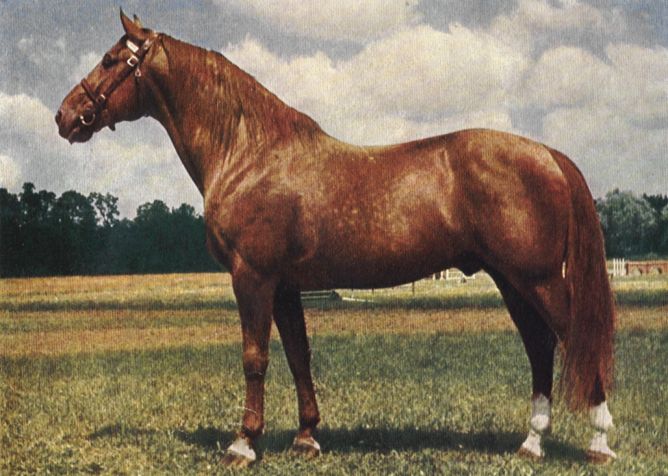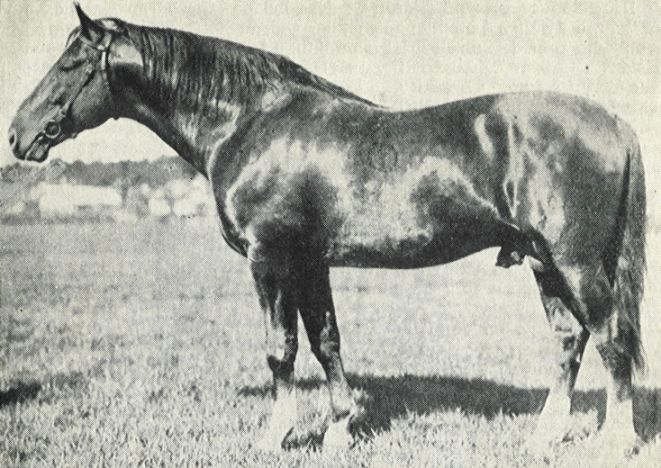

An Arabian stallion named Siglavi Gidran born in Arabia in 1810 by the tribe "Nejd" and imported in the year 1816 to a Hungarian stud farm Bábolna, founded this line of oriental halfbloods. According to well-preserved records, he was very elegant and graceful in appearance, of lively temperament, lest distinct withers and lighter back. He stood 15'1 hands tall. In Bábolna he was bred to various mares of domestic breeds, producing much offspring. The most prosperous of his sons were Gidran I and Gidran II who was out of a bay Lipizzaner mare Fortuna. On account that the progeny of Gidrans was somewhat too heavy, when bred to mares from a military stud farms, the entire herd of Gidrans was moved from Bábolna at first to Mezöhegyesh to be cross bred with English fullbloods (thoroughbreds). From here, part of the herd was moved to the Austrian stud farm in Radovec. Here they were crossbred further with halfblooded and oriental mares. It was common those days, to exchange larger counts of horses, since both of these stud farms worked closely together. First one to excel from the first stallions in Mezöhegyes was Gidran XIV, sired by Gidran VII out of Arabian mare 375 Koheil I, born in Bábolna.

Gidran VII born 1942, Sire Gidran IV, dam 470 Przedswit, 17 hands and 1,336 pounds
In Mezöhegyes the Gidran line was bred to English fullbloods (thoroughbreds) every 2nd or 3rd generation. Henceforth, in appearance they resembled the English type of horses, which was detectable in the straight head, long and low set neck, longer and mildly sloped hind quarters, strong back and build.
In the first half of the 20th century the line of Gidran was bred in Austria, Hungary, Czechoslovakia, Poland, Romania, Bulgaria, Greece and Turkey. The most common color of the Gidran line is chestnut.

Oriental halfblood stallion 24 Gidran XXXIV born 1924


Gidran Stallion

Gidran breeding stallion from Hungarian Stud about 1930

modern Gidran
Radovec is the slavian name for the former Austro-Hungarian state stud Radautz (1792-1914). Under the name Rădăuţi, the Romanian government took over the stud facilities. They continued the breeding of Shagya-arabians, Gidran and Huzul-horses. See: http://www.hergheliaradauti.com/en/history/
AntwortenLöschenThe original Hungarian name for "Mezöhegyesh" should be spelled without the last h: Mezöhegyes.
This Hungarian state stud (founded 1784) still exist, and is breeding Nonius and halfbred sport horses.
See: http://www.mamkft.hu/opening.php?lang=en
Both former Austro-Hungarian military/state studfarms played also a significant role in the development of the Lipizzaner breed!
Nowadays the Hungarian stud Szilvásvárad (famous because of its Lipizzaner breeding), also have the last remained herd of Gidrans in Hungary. Very strong and hard horses, with a high capability for eventing and endurance sports.
See: http://www.menesgazdasag.hu/en/fajta-toertenete/112-a-gidran-fajta-kialakulasa
Thank you adding the links. So much very interesting information.
AntwortenLöschenRomy